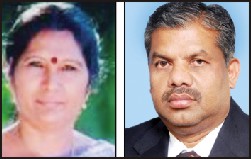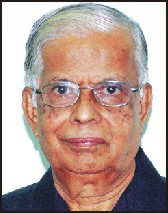The first phase of Roerich Estate restoration work has been completed. Bangalore Mirror has the first pics of the internationally renowned artist’s dwelling

Russian ambassador Alexander Kadakin’s primary concern when he landed in the city in January was the beautification of tombstones of Russian artist Svetoslav Roerich and actress wife Devika Rani. His visit to Tataguni Estate – the residence of the couple on Kanakapura Road – came at a time when the state government was restoring a part of the property.
And now the first phase of Roerich Estate restoration work that kicked off about a year ago has been completed. The tombstones are spruced up, the quaint cottage where the couple lived has been restored without disturbing the aesthetics, a five-acre rose garden has been laid and the property has come alive. The Phase I work has cost the government Rs 2 crore.
Abode of an artist
The stone building has been restored along with its old charm with the stone left exposed in its original state. Some repairs on the flooring, painting of the building, a fresh coat of polish on the red-oxide flooring, etc gave the house the traditional look.
A few metres away from the house are the huge tombstones placed. The couple’s names are written in Russian apart from English and Kannada.
The pathway leading up the tombstones is done up with granite, with steps. The walkway along the estate and into the wild has been cleaned up. The lake, that once was alive is dead now and the Lake Development Authority is taking up work on clearing out the natural vents to the water body from the adjacent catchment, that have been blocked.
“Due to rampant constructions in the adjacent areas and reckless earth filling up, water from the natural source has been blocked and the lake has dried up. LDA is now opening up the blocked channels and this monsoon, the lake should see some water,” says Manu Baligar, the chief executive officer of the Roerich and Devikarani Roerich Estate Board, which functions under the state government’s revenue department.
On the bund of this lake Roerich couple spent their evenings, Baligar said. The bench has not been altered, unlike the other fancier benches on the bund. The five acre land opposite the house has been turned into a beautiful rose garden.
The 468.33 acre estate is rich with fauna, has sandalwood trees and Bursera plantation from which the couple extracted linoloe aromatic oil. The sprawling plantation regularly has elephants and leopards as its uninvited guests. So much so, Kadrappa, one of the labourers is always armed with a sickle and escorts the guests into the wild with his weapon. Kadrappa, has been a loyal at the estate since 25 years and has seen Svetoslav and Devikarani in their last stages, before they shifted out of the estate and moved into a five-star hotel following ill health.
With a touch of Van Gogh
After a long drawn legal battle at the Supreme Court, against property encroachment, the state government set up the Board in 1996 to protect the heritage left behind by the renowned artist. While a lot of antique jewellery reportedly went missing from the house after the death of the couple, the government moved Roerich’s 241 paintings from his studio in the house to Venkatappa Art Gallery which is now under lock and key. “In the second phase of work, there is a project to set up a world-class art museum on the lines of the Van Gogh Museum in Amsterdam. We have asked the archaeology and museums department to come up with concepts. This will be a cultural centre and once the work is completed, all the Roerich paintings from Venkatappa Art Gallery will be shifted here,” Baligar told Bangalore Mirror.
source:http://www.bangaloremirror.com / Bangalore Mirror / Home> Bangalore> Others / by Kushala S, Bangalore Mirror Bureau / June 23rd, 2015






